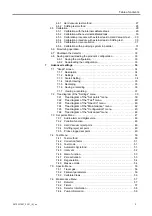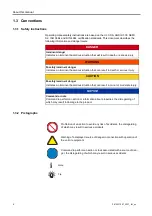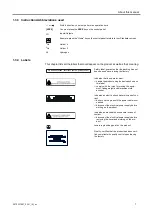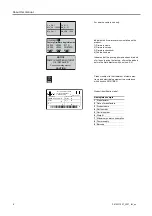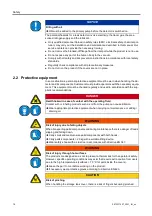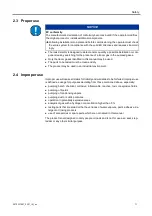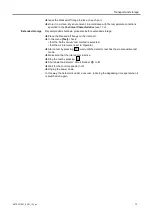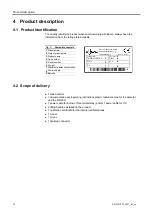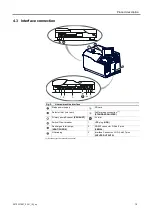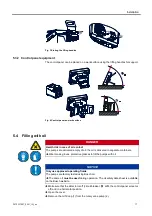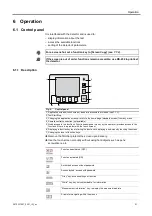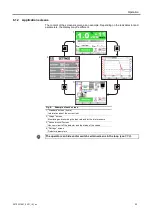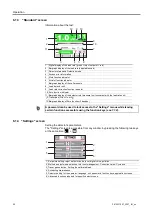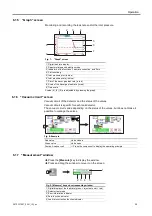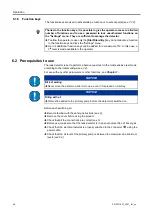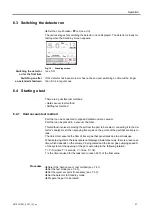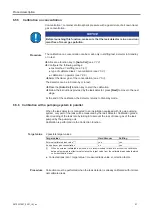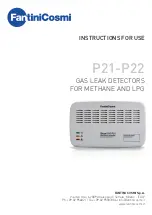
5 Installation
5.1 Prerequisites for optimising measurement
To optimise pumping and measurement speed:
● Use pipe with a diameter equal to the diameter of the detector's inlet. The pipes should
be as short as possible and completely sealed.
● Do not use plastic hoses such as compressed air pipes.
● Check that the connected part/installation is impermeable to tracer gas.
● Test only clean, dry parts/installations with no trace of water, vapour, paint, detergent
or rinsing products.
● Test that the entire line is completely sealed when the detector is attached to the
pumping circuit, to ensure that the connections are correct (pump, pipe, valves, etc.).
5.2 Operating conditions
Environmental conditions (see 11.2).
5.3 Set-up
The leak detector must be installed on a flat, horizontal surface, supported by its feet,
with the detector's inlet port on the top.
Choose the location for set up according to the dimensions of the detector: chapter
Technical Characteristics
.
Move the detector with a hoist, using the handling devices
.
5.3.1 Storing the lifting handles
One the detector has been installed, the handles can be removed and stored in the back
of the detector or used to place the control panel on a work surface.
Tools required
● 5-mm Allen key.
DANGER
Explosion hazard.
For detecting leaks with 'hydrogen' tracer gas, the operator must use hydrogenated ni-
trogen (mix of 95 % N
2
and 5 % H
2
).
NOTICE
Risk of pollution from solid substances
When applications generate particles, we recommend protecting the detector's inlet.
Install a inlet filter.
NOTICE
Detector ventilation
If there is insufficient ventilation, overheating could cause damage to the components:
Comply with the ambient operating temperature.
Do not obstruct the air vents.
Leave a gap of 70 mm around the air vents.
16
0870231897_0001_IM_en
Installation


